Top Tier CPU Air Coolers Q3 2015: 9-Way Roundup Review
by E. Fylladitakis on July 6, 2015 8:00 AM ESTThe SilentiumPC Grandis XE1236
SilentiumPC is a Polish company that is fairly well known in Europe, yet with virtually no presence in the North American markets. The company was founded in 2007, aiming to provide a wide variety of cooling and case solutions at competitive prices. For the means of this review, SilentiumPC provided us with the Grandis XE1236, which currently is the best cooler the company produces.
The Grandis is supplied in an aesthetically plain but effective cardboard box. There is nothing of note regarding the appearance of the packaging, as the only artwork is a picture of the cooler itself. It does offer good shipping protection though, with the cooler protected inside a clear plastic shell and the bundled items grouped in secondary cardboard boxes.
With the company focused on minimizing the costs, we did not expect the bundle of the Grandis to be grand. Nevertheless, besides the necessary mounting hardware and wire clips for three fans, SilentiumPC provides a tube of quality Pactum PT-1 thermal compound and a Y 4-pin fan power splitter. A small wrench tool is also provided, necessary for the installation of the cooler.
The Grandis is supplied with two 120 mm cooling fans. Both fans are mechanically and electrically identical, with black solid frames and tinted black blades. They have been rebranded and it is difficult to recognize their OEM. Their electrical specifications, speed and sleeving type match the Power Logic PL12S12L, yet the acoustic ratings are worlds apart.
The Grandis XE1236 is a symmetric dual tower CPU cooler, with relatively narrow towers for its class. The fins of both towers are perfectly symmetric as well, meaning that both their front and rear sides are identical, mostly straight with shallow indentations near their center. SilentiumPC died the top fin black, obviously for aesthetic purposes only, but it does not cover the copper heatpipes.
Up to three 120 mm cooling fans can be installed on the Grandis, using the provided wire clips. The wire clips are strangely shaped and very wide, expanding above and below the cooling fans. This makes them flimsy and prevents the movement of the front fan upwards to offer clearance for the RAM modules, if necessary. The center fan will have to be removed for the installation of the cooler, as there are no holes for a screwdriver. Do note that a Philips PH2 screwdriver with a shank longer than 145 mm is necessary for the installation of the Grandis, which is not supplied.
The base of the Grandis XE1236 is about as simple as the rest of the cooler is. It is split into two parts: the narrow lower copper part serves as the contact surface and the aluminum/steel top part provides mechanical cohesion and retention. Six 6 mm copper heatpipes expand from the base of the cooler to either tower on both sides, evenly spaced at the right and the left half of each tower. In order to keep the costs down, SilentiumPC did not plate the copper parts of the Grandis. The quality of the contact surface is disappointing, not because it has not been polished at all but because there are multiple machining marks visible with the naked eye and easily feelable by touch.


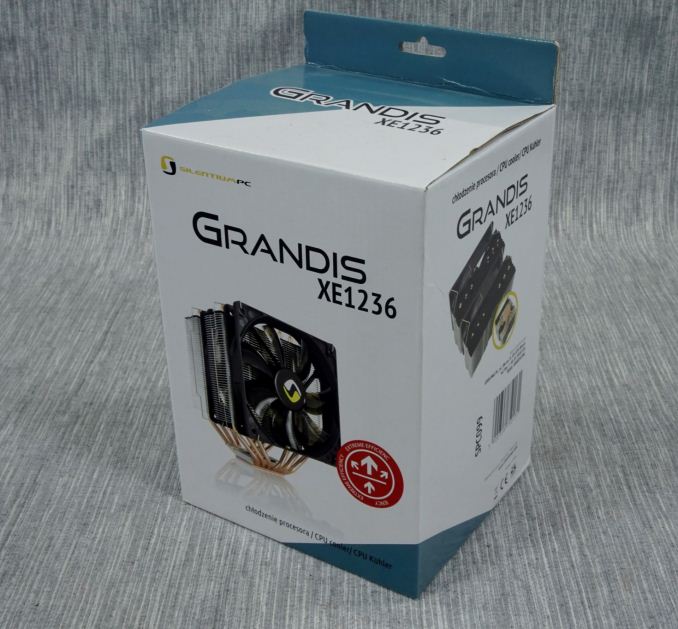
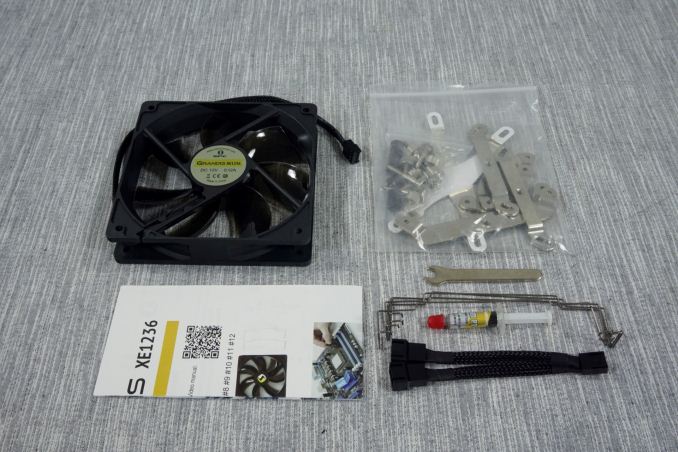
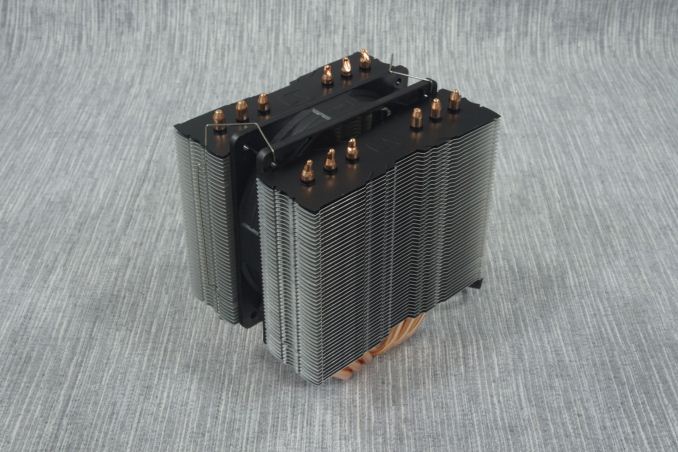
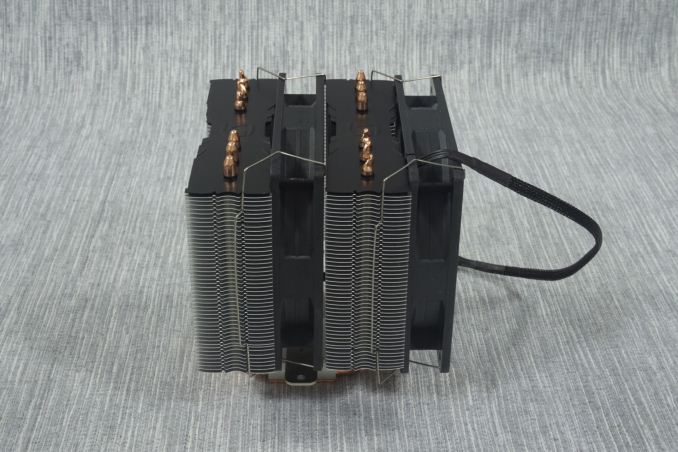
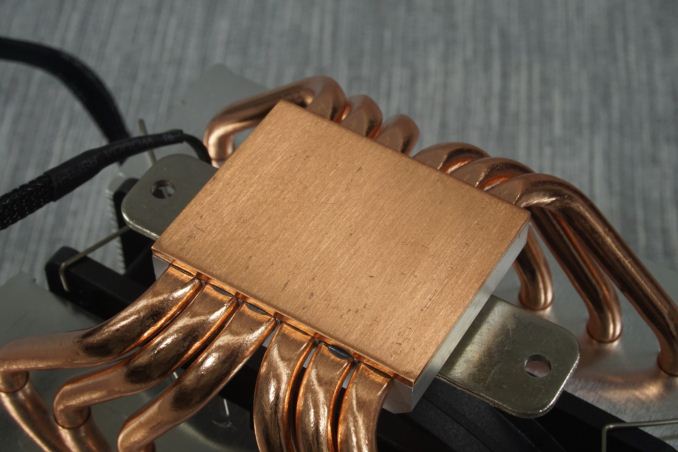








135 Comments
View All Comments
'nar - Tuesday, July 7, 2015 - link
I know right? I was so looking forward to a W/C vs A/C comparison after an intro like that.Margalus - Monday, July 6, 2015 - link
why didn't you test these all with the same fan? Then we could see how the cooler performed independent of the included fans? Like the Thermalright, it comes with no fan, apparently you got a super quiet slow fan and put on there, but that isn't fair to Thermalright saying they are hotter, when it could be because it doesn't have the amount of air moving over the fins as others.Beany2013 - Wednesday, July 8, 2015 - link
Thermalright provided the fan, so they can't grumble at the results.trandoanhung1991 - Monday, July 6, 2015 - link
When you talk about ultimate cooling, you should've at least tested the True Spirit 140 Power Edition with a TY-143 fan, or the Silver Arrow SB-E Extreme. Those are the most interesting products from Thermalright, not the Macho Zero.Maybe as an addendum at some point? I'm very interested to see how the Silver Arrow and the 140 PE fare against the D15.
Impulses - Tuesday, July 7, 2015 - link
Apparently the Macho is what TR themselves chose to send AT, if the intro is accurate... Big /facepalm on their part. They probably have some of the best value coolers in the TRUE Spirits (I have the original Cogage version myself), and the Silver Arrow might've ranked up there with the Noctua and Phantek. The article did make me pretty curious about the latter tho, call me vain but the color choices are cool.Calculatron - Monday, July 6, 2015 - link
Thanks for doing a heatsink round-up. They are refreshing to see these days.It is a shame that Thermalright did not send in its top-tier performer. Then again, the Macho Zero is nothing to sneeze at. ~40C over ambient for a 340 watt load is still a good result. (Perhaps, instead, they could have thrown the TY143 performance fan instead? Har!)
siberus - Tuesday, July 7, 2015 - link
I actually wish they would have sent 2 of the current fans so we could see if push/pull could push it up a performance bracket.rrohbeck - Tuesday, July 7, 2015 - link
I'd like to see the measurements all with the same fan(s) - whatever is considered "the best" fan. That would give an indication of how much you could get out of the cooler with aftermarket fans.'nar - Tuesday, July 7, 2015 - link
I wish there was more review cross-over with water coolers, these two camps seem to be at odds with each other. They never seem to be compared effectively to each other, so it is difficult for consumers to determine the "best" cooler for themselves. With Noctua getting up to $93, there are water coolers out there for less. I bought my Noctua NH-D14 for $75 and thought that was high for a HSF.I strictly used air coolers until I got an AMD APU, among them are several Noctua models. It was apparent to me that this CPU, after a bit of easy O/C, got hot much too fast for an air cooler to absorb. It would crash after just 4 seconds of starting Tomb Raider and the cooling fins were still ambient temperature. I tried three coolers including the Noctua NH-D14. Fan speed did not matter as the rapid increase in temperature exceeded the heatsinks' ability to draw the heat off the CPU itself. I would guess that it take anywhere from 30 seconds to a minute for the heat to actually get to the fins, so if your heat sink cannot "sink" the heat all by itself, no fan, for a full minute, then it has inadequate heat transfer and no fan will fix that.
I installed a Corsair H100i and that works very well. I had previously thought that any cooler with less surface area would have less cooling performance, but I have found that if you cannot transfer the heat to the fins, they make no difference. I think a Corsair H60 would have been fine now. I heard that water coolers were "better" and more efficient, but nobody ever explains WHY.
From this experience at least, it appears that water coolers have better heat transfer performance. Fan speeds and fins are secondary to that, as they do not matter until the heat gets to them. If they get hot, then low speed fans can easily remove that heat as higher temperature differentials generally allow for greater heat transfer. If you run high-power and high-heat for a long time, then higher fan speeds help.
How quickly can your test bench ramp up in power? Was that tested? Was that considered? CPU's can hit maximum power in nanoseconds, and crash in milliseconds. Only the base of the HSF would see anything from that event. I think this test is more academic, and not very relevant in the real-world with actual CPU's. It only tests for maximum heat generation over time, like when running benchmarks, not the dynamic nature in which CPU's operate for most useful loads. But then, that's just my perspective.
Pissedoffyouth - Tuesday, July 7, 2015 - link
I agree with you. I think the heat transfer through heatpipes takes quite some time to get to the fins